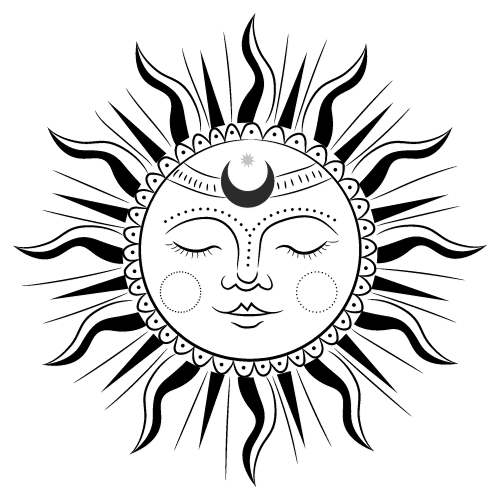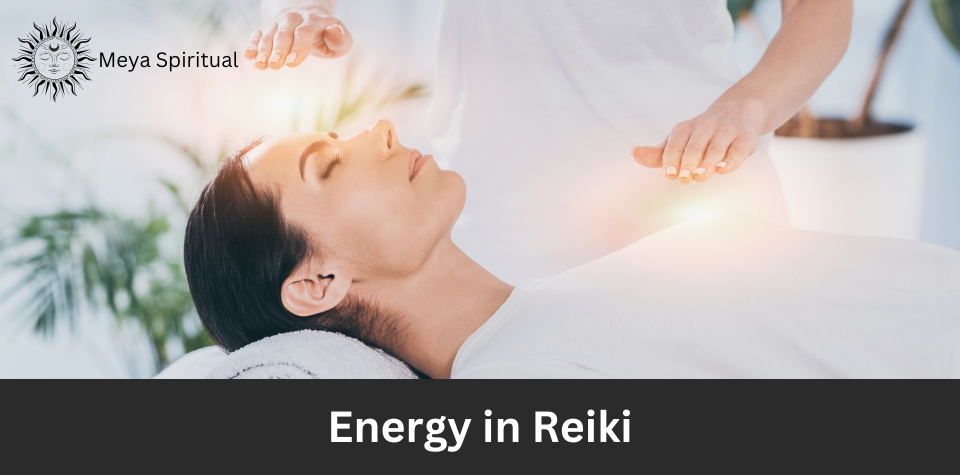Reiki is a form of holistic healing therapy gaining popularity recently. It is based on channeled energy, where practitioners believe they can harness and transfer universal life energy to promote healing and overall well-being in their clients. This energy transfer is said to occur through the hands of the practitioner, who serves as a conduit for the flow of energy to the client.
To fully understand the concept of energy in Reiki, it is important to explore the various aspects of the practice, such as the role of the practitioner, the process of attunements, and the experiences of those who undergo Reiki sessions. Reiki has been used as a complementary therapy alongside conventional treatments in various settings, particularly in palliative care and oncology nursing practice. This integration into mainstream healthcare has sparked interest in further research and understanding of Reiki’s energy dynamics.
While skeptics may question the scientific validity of energy healing, numerous anecdotal and qualitative accounts from practitioners and clients provide insight into the potential benefits of Reiki therapy. Ultimately, understanding energy in Reiki involves a combination of theoretical knowledge, practical application, and personal experience to gain a deeper insight into the practice’s intricate relationship with healing and well-being.
What Are The Different Energies?
In Reiki practice, energy is the vital force flowing through all living beings. There are different types of energies that Reiki practitioners work with to heal and maintain balance in the body. This section will cover the most important ones: Qi (Chi or Ki), Prana, and Life Force Energy.
Qi (Chi or Ki)
Qi, also known as Chi or Ki, is a fundamental concept in traditional Chinese medicine and martial arts. It is believed to be the vital energy that flows through the body’s meridian pathways, essential for maintaining good health. Practitioners of Reiki and other energy medicine modalities work to channel and balance this energy for healing purposes. Some benefits of balancing Qi include increased vitality, improved mental clarity, and emotional stability.
Prana
Prana, derived from ancient Indian traditions, is the life-sustaining energy found within all living organisms. Like Qi, Prana also flows through specific pathways in the body, known as nadis, and plays an essential role in maintaining a person’s physical, mental, and emotional well-being. Reiki practitioners and other energy medicine modalities such as yoga and Ayurveda emphasize balancing Prana to promote overall health and restore balance in the body.
Life Force Energy
Life Force Energy, or universal energy or vital force, is a more general term used to describe the energies that make up life itself. It encompasses both Qi and Prana, as they both contribute to the overall life force that sustains and nourishes living beings. In Reiki practice, Life Force Energy is utilized to channel healing energy to individuals to help restore balance and harmony within their energy fields. Balancing Life Force Energy can increase well-being, reduce stress, and improve physical, emotional, and mental health.
These various forms of energy are essential in Reiki practice as they contribute to the holistic approach of healing. By understanding and working with these energies, Reiki practitioners aim to restore balance and promote overall health and well-being in their clients.
What Is The Human Energy Field?
The human energy field is an invisible energy system surrounding and flowing within the human body. This energy is often associated with Reiki, a form of energy healing that dates back to ancient times. The human energy field encompasses the Aura and the Chakras, both of which are considered essential components of energy healing and holistic wellness.
Aura
The Aura is the energy field that surrounds every person. It is an electromagnetic field that extends several inches or even feet from the body and appears as a colorful, multi-layered energy field. Each layer of the aura represents different aspects of a person’s physical, emotional, mental, and spiritual well-being.
The colors and vibrancy of the aura can provide insights into a person’s emotional state, overall health, and state of consciousness. In Reiki, practitioners work with the aura to detect energy imbalances, cleanse negative energies, and restore equilibrium to promote healing on all levels. Maintaining a healthy and balanced aura is critical for overall well-being.
Chakras
Chakras are energy centers located along the spine, extending from the base to the crown. In Sanskrit, “chakra” means “wheel,” which reflects their spinning cone-like shape. According to ancient Indian tradition, there are seven primary chakras, each associated with specific physical, emotional, and spiritual aspects:
- Root Chakra (Muladhara) – located at the base of the spine, responsible for grounding and basic survival instincts
- Sacral Chakra (Swadhisthana) – located below the navel, associated with creativity, pleasure, and emotions
- Solar Plexus Chakra (Manipura) – located at the solar plexus, linked to personal power, self-esteem, and decision-making
- Heart Chakra (Anahata) – located at the heart, connected to love, compassion, and relationships
- Throat Chakra (Vishuddha) – located at the throat, associated with communication and self-expression
- Third Eye Chakra (Ajna) – located between the eyebrows, linked to intuition, insight, and spiritual awareness
- Crown Chakra (Sahasrara) – located at the top of the head, responsible for enlightenment and connection to the divine
In Reiki, practitioners focus on identifying and balancing the chakras to restore the healthy flow of energy throughout the body. When the chakras are open and balanced, energy flows freely, promoting physical, emotional, and spiritual well-being.
What Is Energy Balance?
In the context of Reiki, energy balance refers to the equilibrium of life force energy, or qi, within a person’s body. This energy is believed to flow through various channels, or meridians, and is essential for maintaining good health and overall well-being. When this energy is balanced, an individual is more likely to experience a state of physical, emotional, and mental harmony.
How Does Energy Balance Affect Health And Well-being?
A balanced flow of energy can contribute to various aspects of an individual’s overall health. Here are some key areas where energy balance can make a notable difference:
- Reducing stress and anxiety: When balanced energy can help mitigate stressors and alleviate anxiety. By harmonizing their energy flow, a person may experience a sense of calm and composure, which can aid in managing everyday challenges.
- Improving sleep: A balanced energy flow contributes to a better sleep cycle and overall relaxation. As a result, individuals may find it easier to fall asleep, remain asleep throughout the night, and wake up feeling more refreshed and rejuvenated.
- Enhancing mood and alleviating depression: Energy balance can positively impact an individual’s emotional state. When energy is flowing evenly, they may experience an uplifted mood and a decreased likelihood of experiencing depressive episodes.
- Boosting immune system function: A balanced energy flow is thought to support the body’s natural defense system. By maintaining a harmonious flow of energy, individuals may have a better chance of staying healthy and resisting illnesses.
In conclusion, energy balance is crucial in maintaining and promoting health and well-being. Through practices like Reiki, individuals can work towards achieving a balanced flow of energy, which can support their physical, emotional, and mental well-being.
How To Improve Energy
Reiki Sessions
Regular Reiki sessions are a powerful way to enhance one’s energy healing abilities. Reiki practitioners can work with clients to identify blocked energy centers or chakras and help to release any negative emotions or blockages. By aligning these energy centers, individuals can experience a greater energy flow throughout their body, leading to a better overall well-being.
Connecting with Universal Life Force Energy
Mikao Usui, the founder of Reiki, emphasized the importance of connecting with the universal life force energy for optimal healing. Practitioners can tap into this energy through meditation and spiritual practice, enhancing their connection to nature and the universe. This deepened understanding of the interconnectedness of all living things can help practitioners wield healing energy more effectively.
Healing
As a healing technique, Reiki has proven effective in addressing various physical and emotional issues. Hospitals and hospices increasingly incorporate Reiki therapy as a complementary treatment alongside traditional medical treatments. Conditions such as cancer, chronic pain, and infertility have improved through Reiki therapy. The non-invasive nature of Reiki, conducted with the client fully clothed, allows for a comfortable experience.
Hand Positions
Reiki practitioners often employ different tools and practices to enhance the healing experience for their clients. Hand positions are used to direct the flow of energy to specific areas of the body. These can be accompanied by using various healing elements such as crystals and gently placing hands on or above the body to channel healing energy.
Meditation
Another way to improve energy is by incorporating meditation and breathing exercises into one’s daily routine. Establishing a regular practice can significantly improve one’s connection to the life force energy. Alongside meditation, practicing gratitude and mindfulness can help release negative emotions, leading to a more balanced and healthier life.
In addition to these practices, Reiki students and practitioners can benefit from developing a strong foundational knowledge of Reiki’s teachings and principles. Continuous learning and personal development can enhance one’s understanding of how to work with energy effectively. Ethical guidelines and best practices within the Reiki community can further ensure the proper use of energy healing.
Finally, maintaining a healthy lifestyle can contribute to improved energy flow. Regular exercise, proper nutrition, and stress reduction are all essential for a balanced life energy. Reiki practitioners can promote optimal energy flow and healing for themselves and their clients by taking care of one’s physical and emotional needs.
Frequently Asked Questions
What is the scientific basis of Reiki?
Reiki is an energy healing technique that is based on the concept of a universal life force energy. This energy is believed to flow through and around all living beings, influencing their physical, mental, and emotional well-being. While research on Reiki is still limited, some studies have shown positive effects on stress reduction, relaxation, and pain management.
How does distance Reiki healing work?
Distance Reiki healing is a technique where the practitioner sends healing energy to a person or situation remotely, without being physically present. This is done by focusing on the individual’s energy field and using intention to direct the flow of energy. The premise for distance Reiki relies on the interconnectedness of all things, allowing energy to flow across space and time.
What are the benefits of Reiki healing?
Reiki healing is known for promoting relaxation, reducing stress, and aiding healing. Some individuals experience improved emotional well-being, enhanced focus, and a sense of inner peace. Additionally, Reiki has been used as a complementary therapy in conjunction with traditional treatments for various health conditions, including cancer, chronic pain, and anxiety.
Can anyone learn and practice Reiki?
Anyone can learn and practice Reiki regardless of their background or beliefs. Typically, individuals attend a training course led by a qualified Reiki Master, where they learn the techniques and receive attunements, which are energy activations that enable them to channel Reiki energy. There are different levels of Reiki training, each providing a deeper understanding and mastery of the practice.
How is Reiki energy channeled during a session?
During a Reiki session, the practitioner places their hands either directly on or slightly above the client’s body, focusing on specific points or the overall energy field. By setting the intention to channel healing energy, the practitioner allows the energy to flow through their hands and into the client. It is believed that the Reiki energy naturally flows to areas where it’s needed most, helping to restore balance and promote healing.
What should one expect during a Reiki treatment?
A Reiki treatment typically begins with the client lying down or seated comfortably, fully clothed, in a quiet and relaxed environment. The practitioner may start by guiding the client through a brief meditation or breathing exercise to help them relax. During the session, the client may experience various sensations such as warmth, tingling, or deep relaxation. Each Reiki session may vary depending on the practitioner’s style and the client’s needs.

